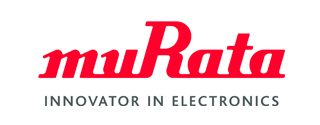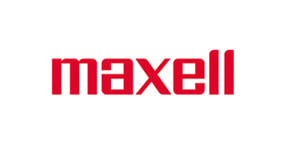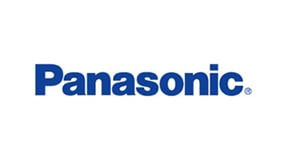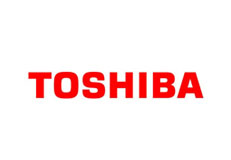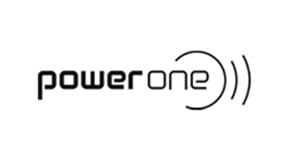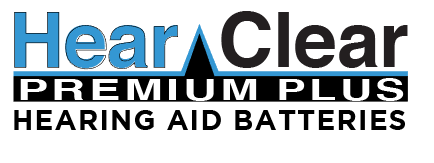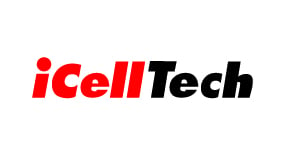Batteries and the environment: How To Dispose of Batteries
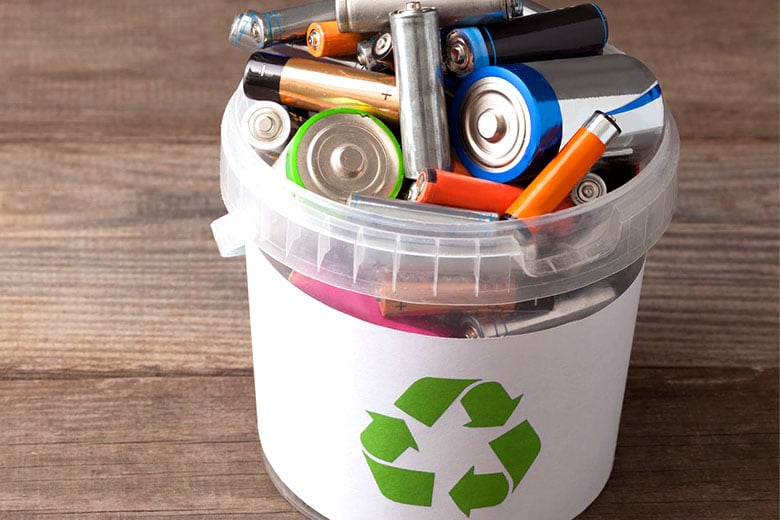
The importance of proper battery disposal
The average person throws away 8 batteries per year. Collectively, we dispose of over 3 billion batteries annually in the United States. According to Science Direct, the UK, with one-fifth of the US population, generates 30,000 tons of wasted general purpose batteries annually. Less than 2–3 percent of them are recycled. The interaction of the chemical constructs of these wasted batteries poses a threat to the environment.
The availability of the nickel metal hydride battery played a crucial role in facilitating Europe’s banning of the nickel-cadmium battery in the EEC’s Battery Directive of 2009. Nickel-cadmium batteries (Ni-CD) along with lead-acid batteries currently represent the greatest environmental threat from energy storage devices. Lithium batteries are, to the surprise of some, quickly following suit. Lithium-ion batteries may be only mildly toxic, but factors including their size, sheer number, and their improper disposal, contribute to their addition to the list of polluting battery chemistries.
To be clear, the problem is not a particular battery chemistry. The issue is its disposal.
Simply stated, the ability to properly handle batteries, and implement safe methods for their disposal continue to be the underscoring issues of environmental safety. Batteries must always be disposed of according to their chemistries. Improper disposal is damaging the environment. Further, thoughtless disposal of ‘environmentally safe’ batteries in household waste bins, where they could be easily accessed by curious children and pets, carelessly exposes them to potential danger.
Recycling efforts and technologies are growing. X-ray technologies exist to sort batteries, which need to be recycled by chemistry. They continue to be explored. In many areas, stores that sell batteries are required to accept the return of depleted batteries. On the other hand, with the exception of lead acid batteries, reports indicate it takes 6 to 10 times more energy to retrieve metals from recycling than it does to mine them. Manufacturers and recyclers battle over the issues of ‘burden’ and ‘responsibility’ with the courts playing arbitrator. As the largest part of the battery industry, we, its several-billion consumers, need to do our part.
Let’s take a brief look at the recycling of different chemistries and their recycling issues. At the end of this post, we will provide some practical battery recycling takeaways.
Lead-acid battery recycling
With the introduction of the starter battery in 1912, the lead-acid battery grew rapidly to support a wide range of applications extending beyond the automotive and marine industries. Lead-acid batteries commonly power industrial equipment, alarm systems, and emergency lighting. Wheeled mobility and UPS systems are also largely dependent on this battery chemistry. Coupled with the ease of extracting lead, our reliance on these applications has continued to justify the continued production of lead-acid batteries, despite the environmental dangers that can be presented by their handling and disposal.
One of the reasons for their survival is that 70 percent of their weight is composed of reusable lead that is easy and cost-effective to extract. Recycling of lead-acid batteries began with the automotive industry as a profitable business. Today, in the US, we recycle 97 percent of our lead-acid batteries compared to only 20 to 40 percent of mobile phone batteries and other hosting consumer products. Many auto dealers and service centers will accept expended batteries for recycling. In fact, because lead can be reused multiple times, over 50 percent of our current lead supply comes from recycling; and 60 to 80 percent of new lead-acid batteries contain recycled plastic and lead, making them a crucial part of the circular economy. The recycling of lead-acid batteries along with environmental concerns paved the way for the recycling of other battery types.
While the composition of lead-acid batteries presents inherent danger, Li-on batteries are more volatile when stripped during the recycling process. The similarity of physical appearance they share poses a problem with discarding. Safety depends on accurate presorting which is challenging at high volumes. Mixing of the two can cause fires, explosions, and personal injury. The two battery chemistries present different hazards—lead acid is benign but toxic and Li-ion is non-malignant but explosive.
Nickel-cadmium (Ni-CD) battery recycling
The Ni-CD battery contains 6–18 percent cadmium depending on its intended market, industrial or consumer. Cadmium is classified as a highly polluting, toxic, heavy metal. Left in a non-recycling landfill, or incinerated with other waste, the metallic cylinder of Ni-Cd batteries corrodes allowing the cadmium to penetrate and dissolve into our water supply. Our oceans already show trace amounts of cadmium contamination although its origin has not been scientifically determined. One of the factors that brings nickel-cadmium battery disposal into critical focus—second only to lead-acid—is that ecological contamination is difficult to both control and remedy. The price of nickel-cadmium batteries sold in the United States includes a fee to cover proper disposal costs associated with this chemistry at the end of its service life. Care must be taken to responsibly dispose of them.
When it comes to personal handling, the potassium hydroxide released from a damaged nickel-cadmium battery is especially corrosive to the skin and can cause permanent eye injury.
Nickel metal hydride (Ni-MH) battery recycling
The rise of Ni-MH batteries to replace Ni-CD in Europe by mandate, and to supplant Ni-CD use in the US was propelled by its environmental friendliness. Although they are toxic, the milder toxicity of nickel metal hydride battery substances pales in comparison to that of nickel-cadmium batteries. This should not be construed to mean they should not be recycled. Any nickel-based battery (Ni-CD and Ni-MH) should be taken to the designated recycling area or bin for recycling, or housed in a secure wall landfill according to the municipal ordinances established in your area; however, in the absence or unavailability of disposal services, it is currently believed that less than ten individual batteries discarded along with household waste is currently environmentally tolerable.
Alkaline battery recycling
With the Mercury-Containing and Rechargeable Battery Management Act (1996) requiring the reduction of mercury content, general-purpose alkaline batteries are widely considered domestic trash in many areas. One exception is California, which considers all battery chemistries toxic waste. Zinc and manganese content from alkaline batteries could be reused, but the extraction process is not without its weight in cost and practicality issues. Europe’s strong stance on most battery chemistries, allows alkalines to pass as nonhazardous waste. In the US, most chain retailers that sell batteries are required to accept the return of spent batteries; however, it has been widely reported that many of them end up in the trash. Efforts are underway to increase the recycling of alkaline batteries to 40 percent in a decade from its 4 percent low in 2015.
Before throwing away an alkaline battery double-check to make sure it is actually alkaline. Batteries in AA, AAA, AAAA, C, D, and 9-volt size formats are also available in lithium and nickel metal hydride chemistries, such as the lithium AA battery or the Ni-MH D cell batteries. Mixing these batteries in your trash can pose a significant risk to the workers who sort through your waste.
Primary lithium battery recycling
Primary lithium batteries are single-use, non-rechargeable cells available in multiple formats, including AA, AAA lithium batteries, and coin batteries, such as those found in watches or computer motherboards with model numbers that begin with the characters ‘CR’ (e.g., CR2025). The lithium metal contained in these batteries reacts violently with moisture. Lithium cells with a remaining charge left in a landfill are particularly dangerous. Batteries crushed by heavy equipment operating on top can release lithium that could start a fire. Because landfill fires are challenging to completely extinguish, the fire could continue to burn underground for years.
We encourage you to recycle your disposable lithium batteries, or at the very least, fully discharge them to deplete the lithium content prior to disposal.
Lithium-ion battery recycling
The proper disposal of rechargeable Li-ion battery packs and general-purpose batteries, such as the 18650 battery, is important. This is especially true with the exponential growth of their use in recent years, from portable computing devices to Electric (EV) and Plug-in Electric (PEV) vehicles. While the disposal of Li-ion batteries is held to be reasonably harmless for the environment, they contain elements that are as toxic. Improperly discarded electronic devices can be explosive under specific conditions. Just in the period of January to April of 2018, Li-ion batteries were partly responsible for 347 waste and recycling facility fires across the U.S. and Canada that led to numerous injuries and 5 deaths to facility employees.
Lithium-based battery disposal is a growing issue in the waste industry, and it’s something we can fix by simply recycling our batteries correctly. The growing concern is reflected in a European Commission report that points out the large number of batteries nearing the end of their service life, which can be neither landfilled, nor incinerated. Landfilling large amounts of this battery chemistry presents toxicity concerns and danger of explosion. Incinerating the substance produces toxic ashes. There is also concern regarding the cobalt content and the binding agents.
Wasted lithium-ion batteries contain substantial resources that could otherwise be recycled to form new batteries or repurposed for less demanding products. For example, lithium is also used as a lubricant. According to the German technology publication, Automobiltechnische Zeitschrift (AZT), which focuses on research and development in the automotive industry, the 33kWh battery of just one BMW i3 contains: 4.4 pounds (2kg) of cobalt, 13 pounds (6kg) of lithium, 26 pounds (12kg) each of manganese and nickel, and 77 pounds (35kg) of graphite.
Recycling is increasingly turning its attention to Li-on batteries. German company, Duesenfield GmbH, for example, has a patented innovative procedure to recover 91 percent of battery cell materials without smelting, using 70% less energy, and with lowered formation of hazardous gases. Graphite is filtered and regained, producing lithium-carbonate, nickel-sulfate, cobalt-sulfate, and manganese-sulfate.
Practical battery recycling takeaways
The improper disposal of our batteries introduces numerous hazardous compounds to the municipal solid waste stream, including lead, cadmium, cobalt, nickel, alkalines, manganese, and zinc. Recycling batteries keeps these toxic metals out of landfills, and ultimately out of the air and water supply. Proper recycling also saves resources. The recovered plastic and metals can be repurposed to manufacture new batteries and many other products. While some of these compounds may not be as easily recycled as lead, numerous programs facilitate battery collection, sorting, and proper disposal.
As consumers we can:
- Actively seek out certified recycling programs. Except in California where all battery types must be recycled, if your battery is not alkaline, make sure to get it to the correct drop-off location. You can check the website of your local municipal government or call them for local recycling programs in your area. Many retailers will also accept spent batteries, as well as some university or college custodial services. Organizations like Call2Recycle offer take-back programs throughout the United States and Canada. A Google search of other websites will yield valuable information on how and where to easily recycle batteries of all types.
- Take initiative to recognize different popular battery types. Chemistry is clearly indicated on all recognized-brand battery types, such as alkaline, lithium, nickel metal hydride (Ni-MH), and nickel-cadmium (Ni-CD). Often these batteries can take on the same form-factor. For example, AA batteries are not necessarily alkaline; they could be Ni-MH or lithium chemistries. Reference our helpful chart below for some basic guidance. If a recycling service accepts specific chemistries or requires presorting of batteries by composition, be sure not to mix in other battery chemistries to avoid injury.
- Consider switching to rechargeable general-purpose batteries. Reduce your purchases of single-use, disposable batteries. With hundreds of charge-cycles, rechargeable batteries are both more sustainable and cost effective. Once they’ve worn out, dispose of them responsibly.
- Be attentive to the battery or package labeling for helpful information. Congress passed the Mercury-Containing and Rechargeable Battery Management Act in 1996 to facilitate collection and recycling of regulated Ni-CD batteries and lead-acid batteries. The act mandates easy removal of the battery from its host device, inclusion of battery chemistry on the label, and the famous triangular chasing-arrow formation to indicate recyclability.
Here is a general guide to help you identify common batteries by chemistry, markings, and shapes. It is not exhaustive, serving only as a very general overview.
| Battery type | Likely markings | Common shapes | Recycling |
| Lead-acid | Lead, Lead Acid, SLA, Gel Cell, VRLA, AGM |
Usually cuboid or cylindrical. Custom or application-specific packs* |
Always recycle lead-acid batteries! |
| Nickel-cadmium | Ni-Cd (var., NiCD, NiCad) |
Usually cylindrical (e.g., AA, AAA) or cuboid. Custom or application-specific packs* |
Always recycle nickel-cadmium batteries! |
| Nickel metal hydride | Ni-MH, (var., NiMH) |
Usually cylindrical (e.g., AA, AAA). Custom or application-specific packs* |
Always recycle nickel metal hydride batteries. |
| Primary lithium (non-rechargeable type) | Lithium |
Usually cylindrical (e.g., AA, AAA, C) or coin. Custom or application-specific packs* |
Recycling is strongly recommended. |
| Secondary lithium (rechargeable type) |
Li-ion, Li-polymer (var., Li-poly), others Coin shaped. IEC model numbers begin with ‘CR’. |
Usually cylindrical (e.g., AAA, AA, 18650) or cuboid (e.g., 9V) Custom or application-specific packs* |
Recycling is strongly recommended. |
| Alkaline |
Alkaline Coin shaped. IEC model numbers begin with ‘LR’. |
Cylindrical (e.g., AA, AAA, AAA,), coin, and the popular 9V battery. |
Most areas do not require recycling but recommended. Be careful of disposing in waste bins accessible to children or pets. |
| Silver-oxide |
SO2
Coin shaped. IEC model numbers often begin with ‘SR’. |
Coin or button | Silver-oxide batteries are often collected by jewelers, pharmacies, for resale to metal reclaiming companies. |
| Zinc-air |
MnO2 Coin shaped. IEC model numbers often begin with ‘PR’. |
Coin or button | Hearing aid retailers often collect spent batteries for resale to companies that reclaim the metals. |
*Custom or application-specific packs. Custom packs may consist of a group of batteries encased in rubber heat-shrink. Application-specific packs come in varied device-specific shapes such as those found in mobile computing devices, power drills, etc. In these cases, the device manufacturer’s documentation will identify the battery chemistry if it is not labeled on the battery pack itself.
About Us:
Microbattery.com is the leading provider when it comes to Hearing Aid Batteries, Watch Batteries, Lithium Coin Cells, Lithium Batteries, Alkaline Batteries, and Rechargeable Batteries across North & South America. We have the capability to meet the needs of all sizes of consumers, dealers, distributors and importers. For over 25 years, we have been striving to ensure high customer satisfaction and providing the best quality product possible. Ever since our online store was launched 15 years ago, we have been constantly improving & optimizing our site to provide the most enjoyable and convenient shopping experience for our valued customers.
Our online store has one of the largest selections of various batteries and battery products for all types of electronic applications on the web. Our website is very easy to navigate to help ensure customers can find exactly what they need. All of our products are conveniently organized by category. They can be easily filtered by the category drop down located at the top of every page on our website. Alternatively customers can use the Battery Finder™ located on our homepage, to quickly and simply identify the exact batteries they need. If you require any assistance in determining what products are right for you please do not hesitate to give us a call at (305)-371-9200.
At Microbattery.com, you will find one of the largest selections of batteries on the web. We have millions of cells of common batteries like CR2025, CR2032, LR44, LR41, AA, and AAA in stock at all times. We also carry a wide variety of less common batteries such as CR2477, CR2016, Rechargeable Batteries, Radio Batteries, Telephone Batteries, and Pet Batteries. Regardless of your battery needs, we have got you covered. If you require a battery that we currently do not carry, please feel free to give us a call at (305)-371-9200 to place a special order (some restrictions apply).
Our customer base currently includes tens of thousands of satisfied consumers, various private companies, (local, state, federal, international) government agencies, military, institutions, wholesalers, and chain stores. Without hassle, we will ship your products worldwide, already having done so for over eighty-five countries.
Thank you for taking the time to read this article: If you are interested in purchasing products from Microbattery.com use coupon code: Microfive : To save 5% on your entire online order!
